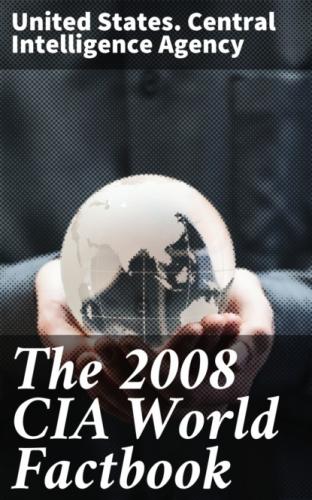Radio broadcast stations:
AM 0, FM 5, shortwave 3 (2006)
Radios:
357,000 (1997)
Television broadcast stations:
6 (2001)
Televisions:
85,000 (1997)
Internet country code:
.gn
Internet hosts:
16 (2008)
Internet Service Providers (ISPs):
4 (2001)
Internet users:
50,000 (2006)
Transportation
Guinea
Airports:
16 (2007)
Airports - with paved runways:
total: 5 over 3,047 m: 1 2,438 to 3,047 m: 1 1,524 to 2,437 m: 3 (2007)
Airports - with unpaved runways:
total: 11 1,524 to 2,437 m: 6 914 to 1,523 m: 3 under 914 m: 2 (2007)
Railways:
total: 837 km standard gauge: 175 km 1.435-m gauge narrow gauge: 662 km 1.000-m gauge (2006)
Roadways:
total: 44,348 km paved: 4,342 km unpaved: 40,006 km (2003)
Waterways:
1,300 km (navigable by shallow-draft native craft) (2005)
Ports and terminals:
Conakry, Kamsar
Military
Guinea
Military branches:
Armed Forces: Army, Navy (Marine Guineenne, includes Marines), Air
Force, Presidential Guard (2008)
Military service age and obligation:
18 years of age for compulsory military service; 2-year conscript service obligation (2006)
Manpower available for military service:
males age 16–49: 2,230,049 females age 16–49: 2,193,236 (2008 est.)
Manpower fit for military service:
males age 16–49: 1,268,193 females age 16–49: 1,259,913 (2008 est.)
Manpower reaching militarily significant age annually:
male: 106,967 female: 104,631 (2008 est.)
Military expenditures:
1.7% of GDP (2006)
Transnational Issues
Guinea
Disputes - international:
conflicts among rebel groups, warlords, and youth gangs in neighboring states have spilled over into Guinea, resulting in domestic instability; Sierra Leone considers Guinea's definition of the flood plain limits to define the left bank boundary of the Makona and Moa rivers excessive and protests Guinea's continued occupation of these lands, including the hamlet of Yenga, occupied since 1998
Refugees and internally displaced persons:
refugees (country of origin): 21,856 (Liberia); 5,259 (Sierra
Leone); 3,900 (Cote d'Ivoire)
IDPs: 19,000 (cross-border incursions from Cote d'Ivoire, Liberia,
Sierra Leone) (2007)
Trafficking in persons:
current situation: Guinea is a source, transit, and destination country for men, women, and children trafficked for the purposes of forced labor and sexual exploitation; the majority of victims are children, and internal trafficking is more prevalent than transnational trafficking; within the country, girls are trafficked primarily for domestic servitude and sexual exploitation, while boys are trafficked for forced agricultural labor, and as forced beggars, street vendors, shoe shiners, and laborers in gold and diamond mines; some Guinean men are also trafficked for agricultural labor within Guinea; transnationally, girls are trafficked into Guinea for domestic servitude and likely also for sexual exploitation tier rating: Tier 2 Watch List - Guinea is on the Tier 2 Watch List for its failure to provide evidence of increasing efforts to eliminate trafficking over 2006; Guinea demonstrated minimal law enforcement efforts for a second year in a row, while protection efforts diminished over efforts in 2006; the government did not report any trafficking convictions in 2007; due to a lack of resources, the government does not provide shelter services for trafficking victims; the government took no measures to reduce the demand for commercial sexual exploitation (2008)
This page was last updated on 18 December, 2008
======================================================================
@Guinea-Bissau
Introduction
Guinea-Bissau
Background:
Since independence from Portugal in 1974, Guinea-Bissau has experienced considerable political and military upheaval. In 1980, a military coup established authoritarian dictator Joao Bernardo 'Nino' VIEIRA as president. Despite setting a path to a market economy and multiparty system, VIEIRA's regime was characterized by the suppression of political opposition and the purging of political rivals. Several coup attempts through the 1980s and early 1990s failed to unseat him. In 1994 VIEIRA was elected president in the country's first free elections. A military mutiny and resulting civil war in 1998 eventually led to VIEIRA's ouster in May 1999. In February 2000, a transitional government turned over power to opposition leader Kumba YALA, after he was elected president in transparent polling. In September 2003, after only three years in office, YALA was ousted by the military in a bloodless coup, and businessman Henrique ROSA was sworn in as interim president. In 2005, former President VIEIRA was re-elected president pledging to pursue economic development and national reconciliation.
Geography
Guinea-Bissau
Location:
Western Africa, bordering the North Atlantic Ocean, between Guinea and Senegal
Geographic coordinates:
12 00 N, 15 00 W
Map references:
Africa
Area:
total: 36,120 sq km land: 28,000 sq km water: 8,120 sq km
Area - comparative:
slightly less than three times the size of Connecticut
Land boundaries:
total: 724 km border countries: Guinea 386 km, Senegal 338 km
Coastline:
350 km
Maritime claims:
territorial sea: 12 nm exclusive economic zone: 200 nm
Climate:
tropical; generally hot and humid; monsoonal-type rainy season (June to November) with southwesterly winds; dry season (December to May) with northeasterly harmattan winds
Terrain:
mostly low coastal plain rising to savanna in east
Elevation extremes:
lowest
